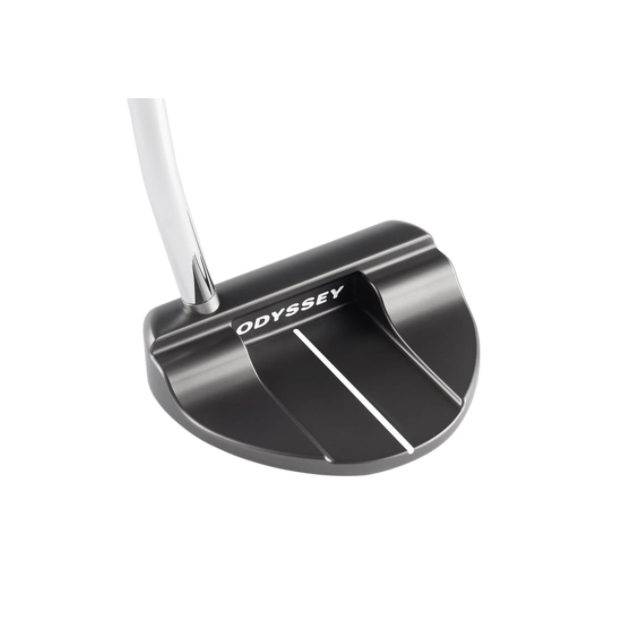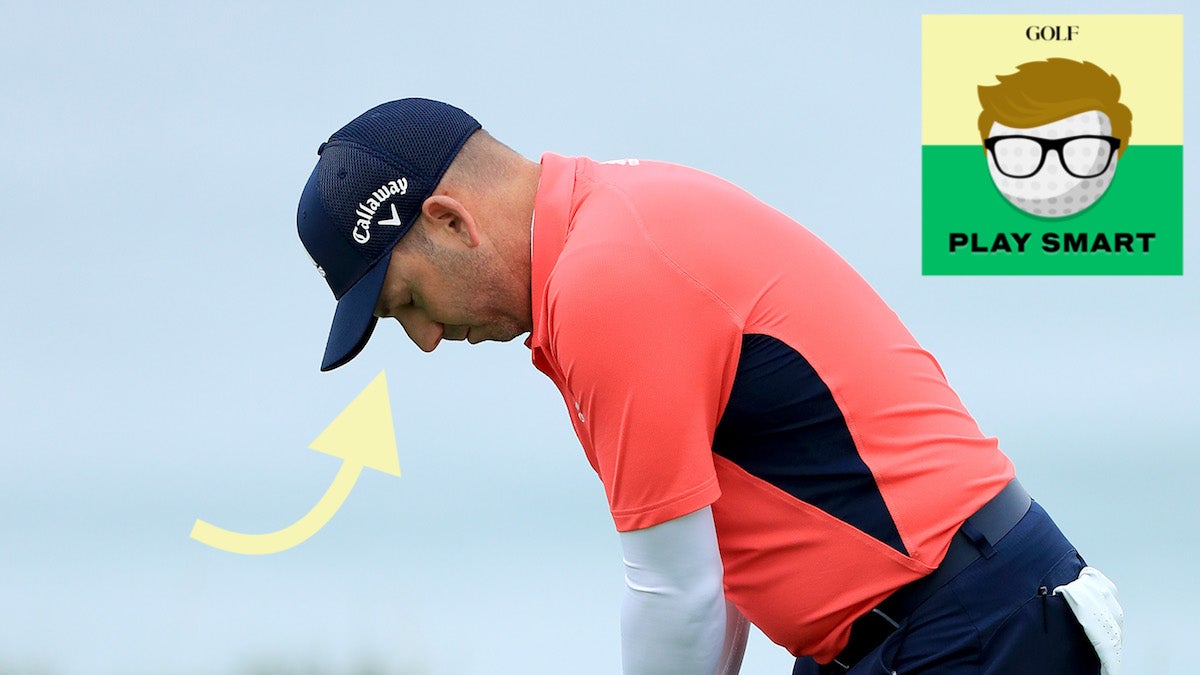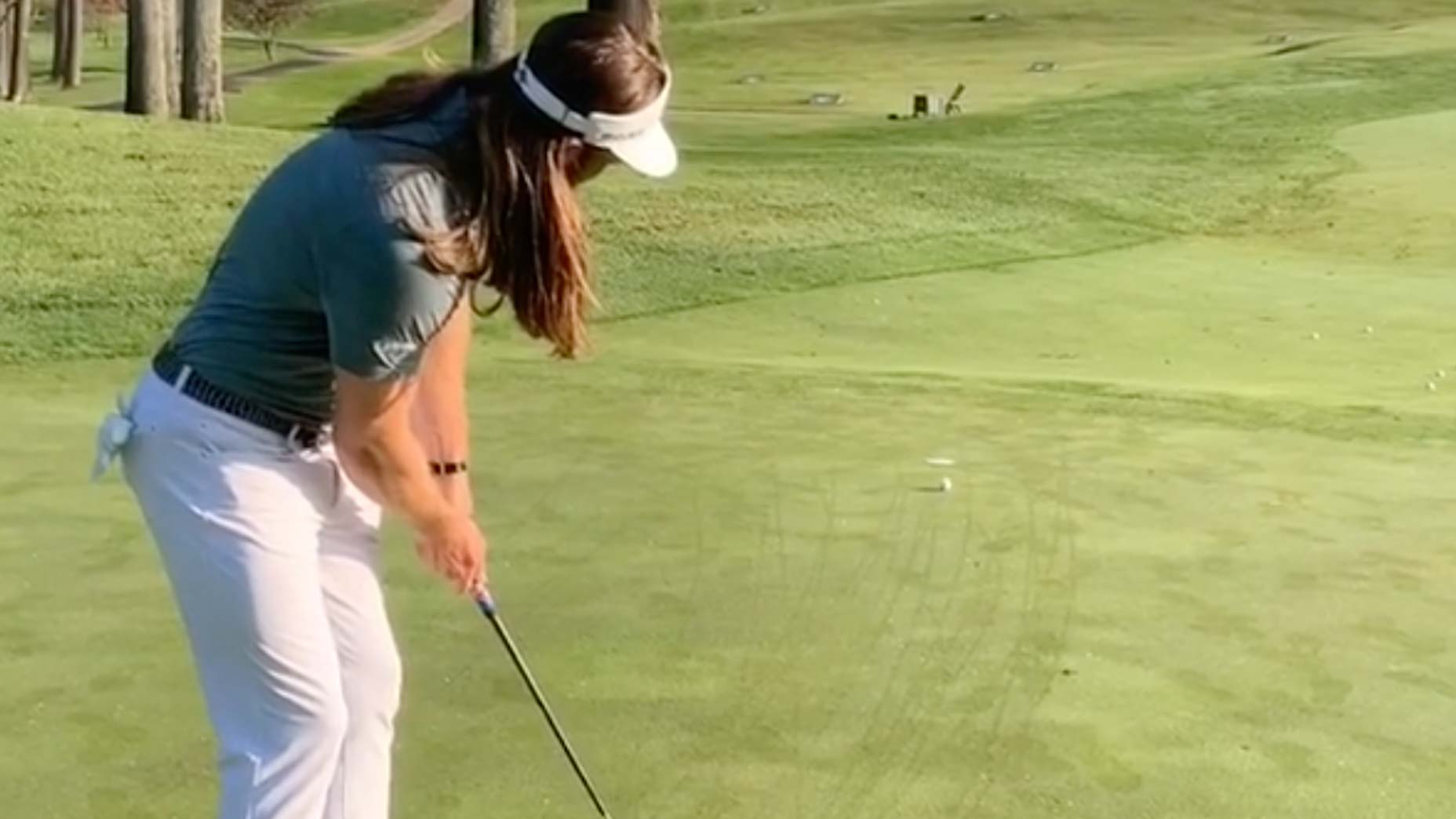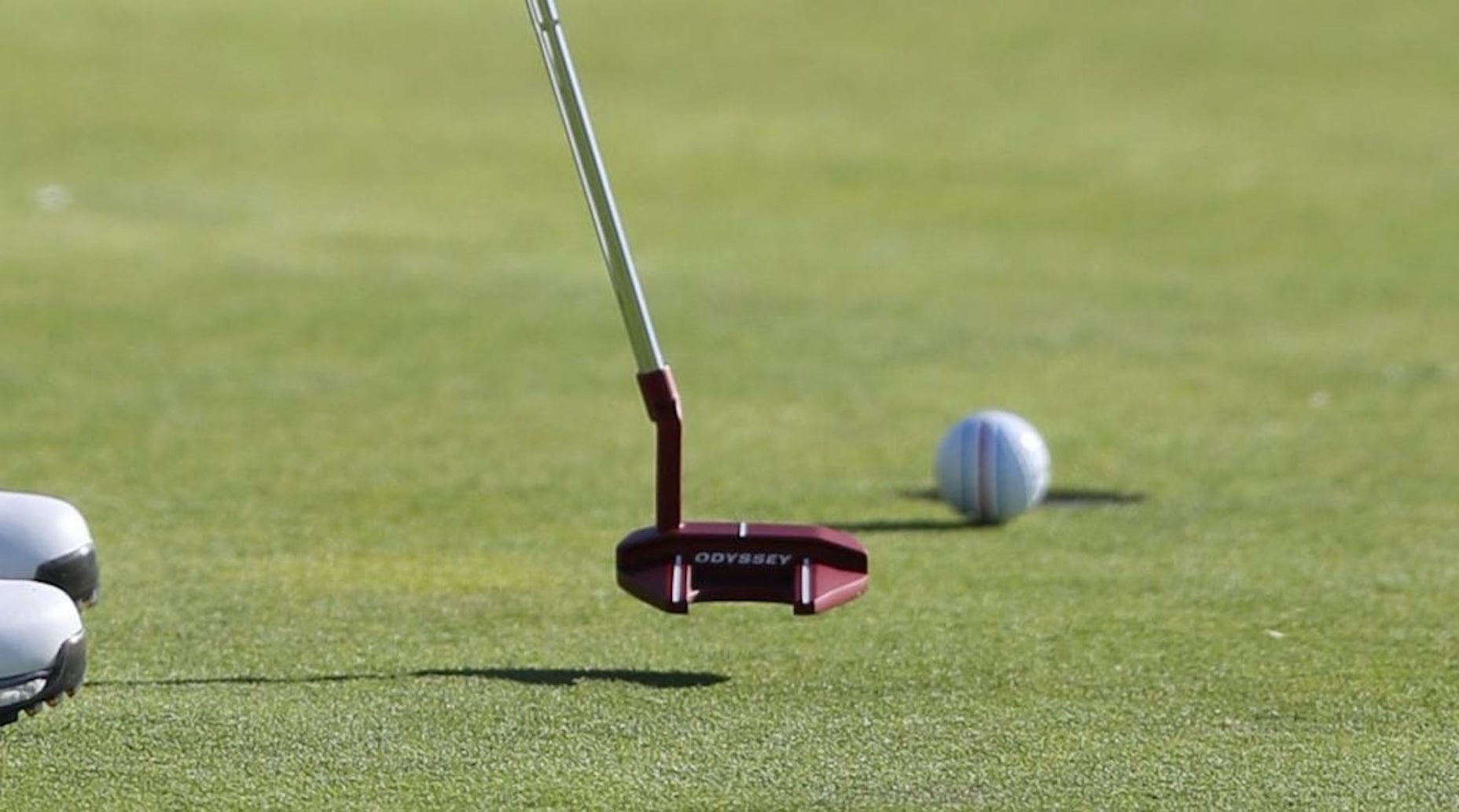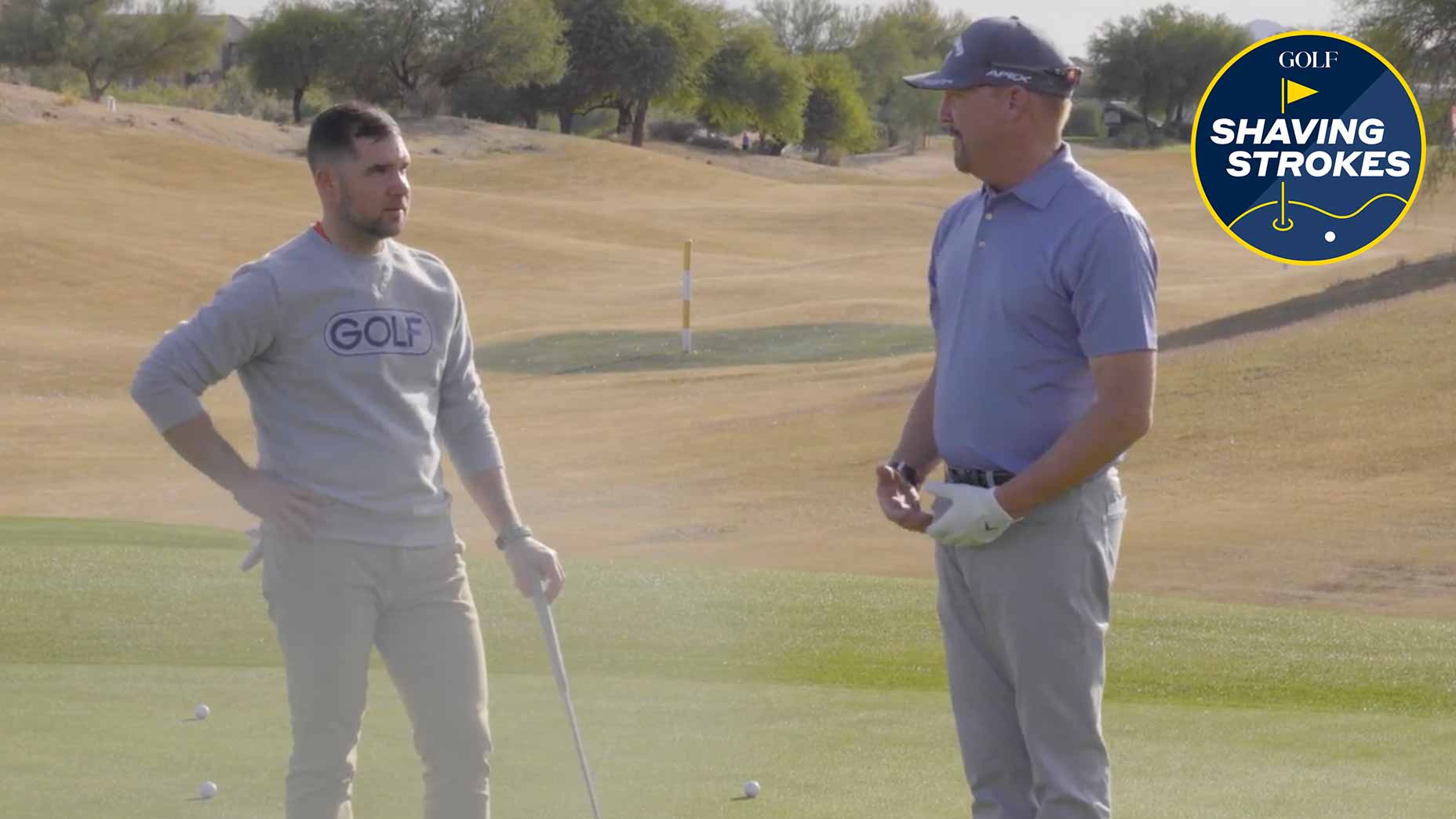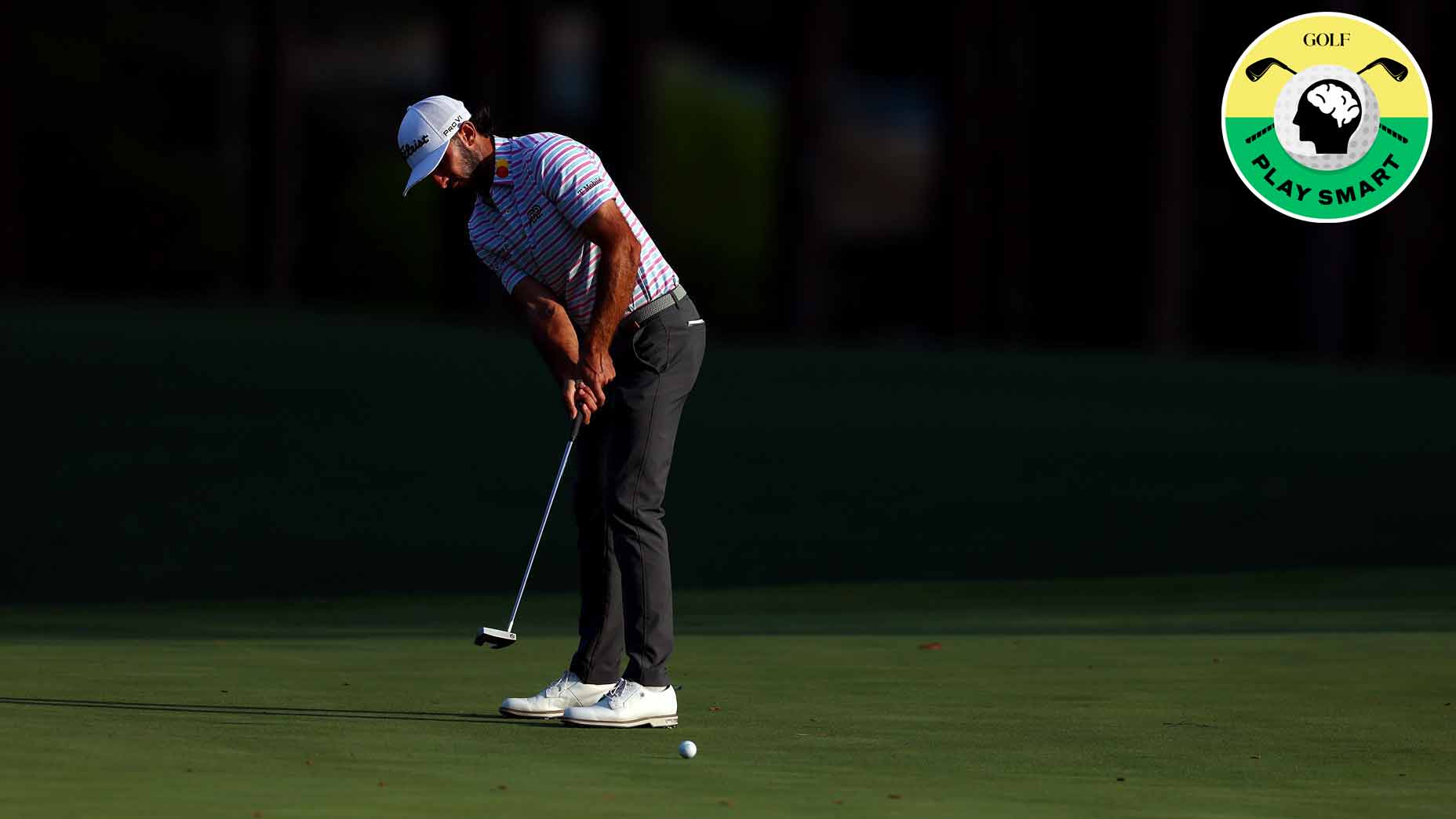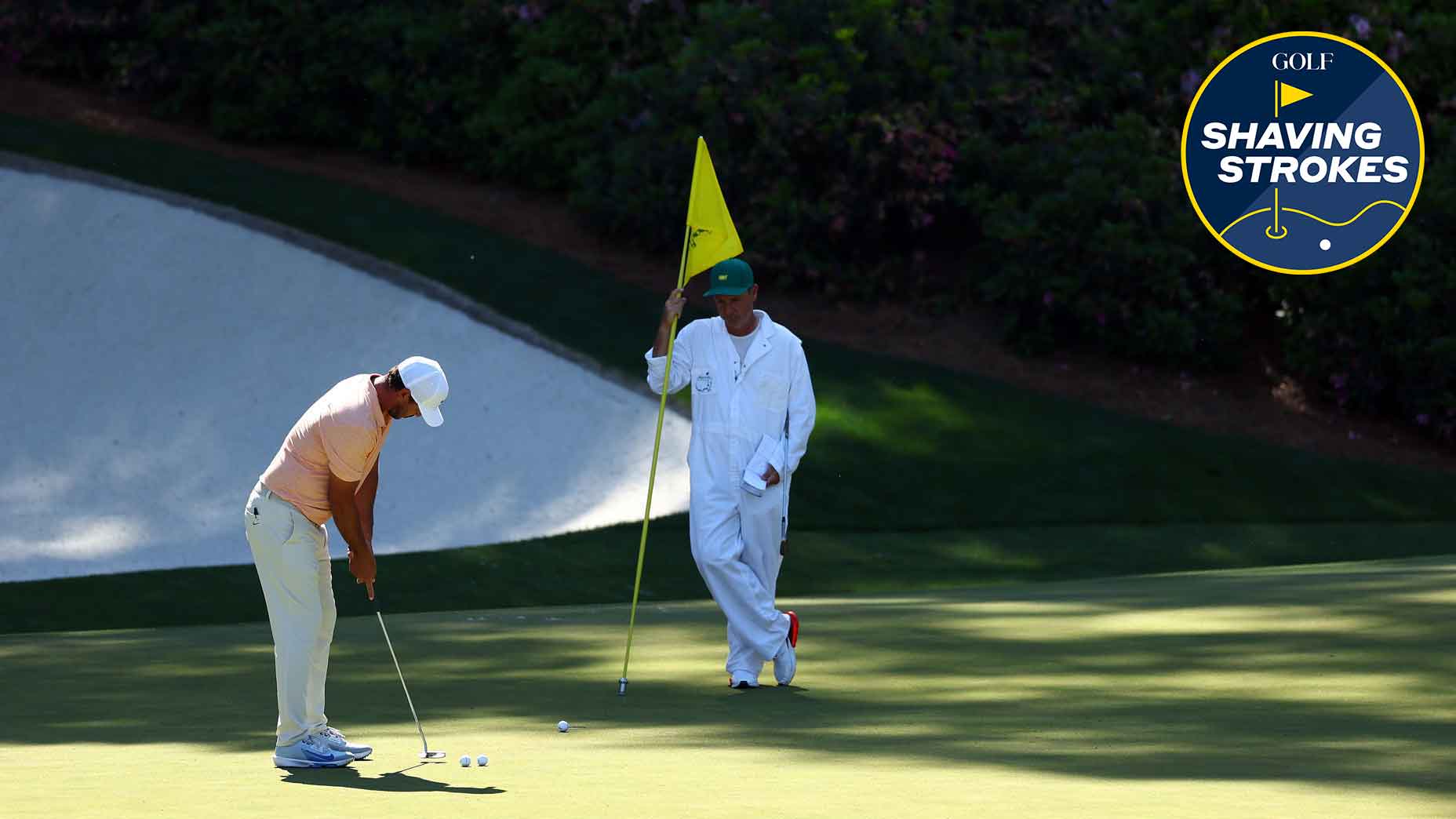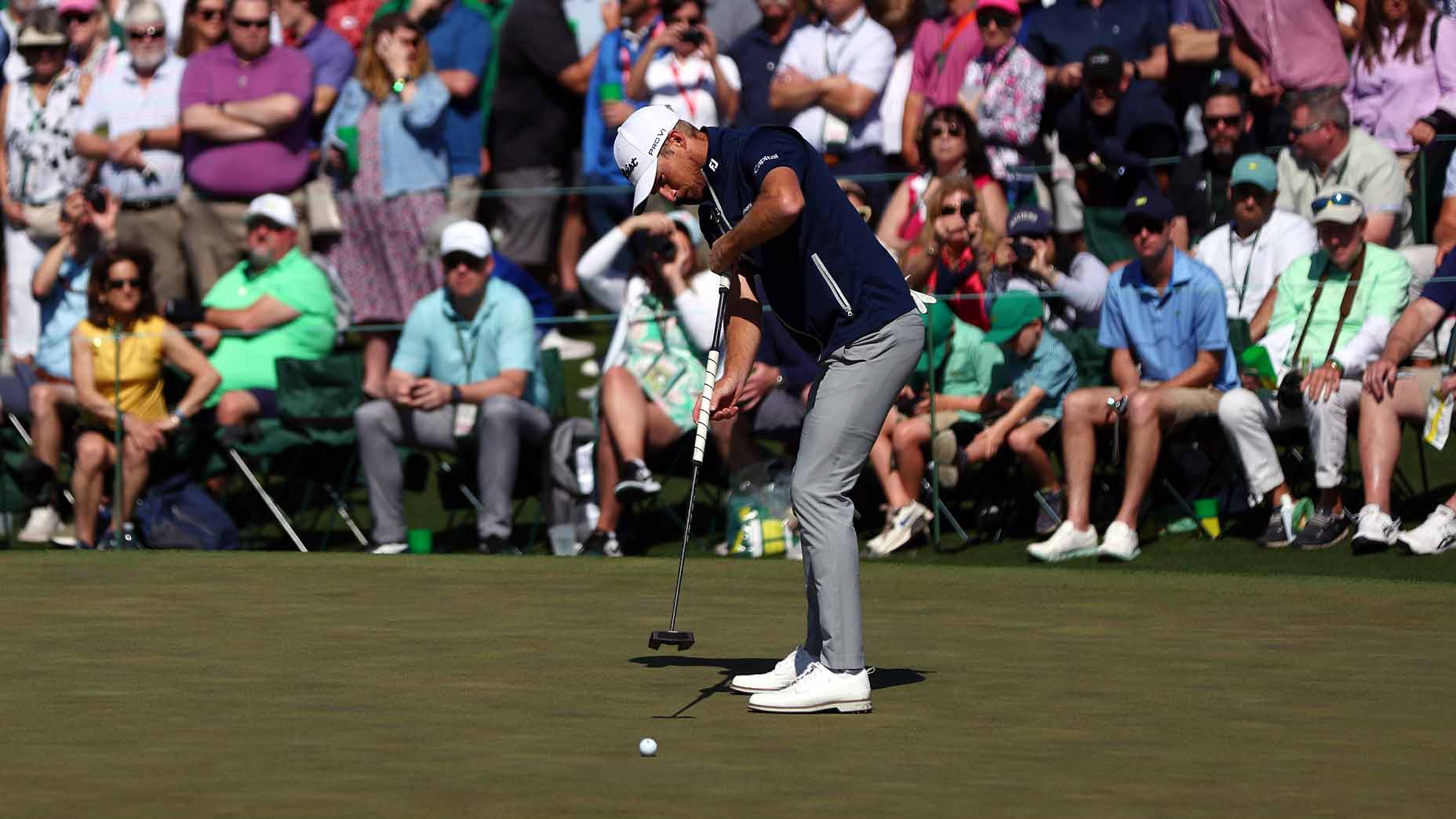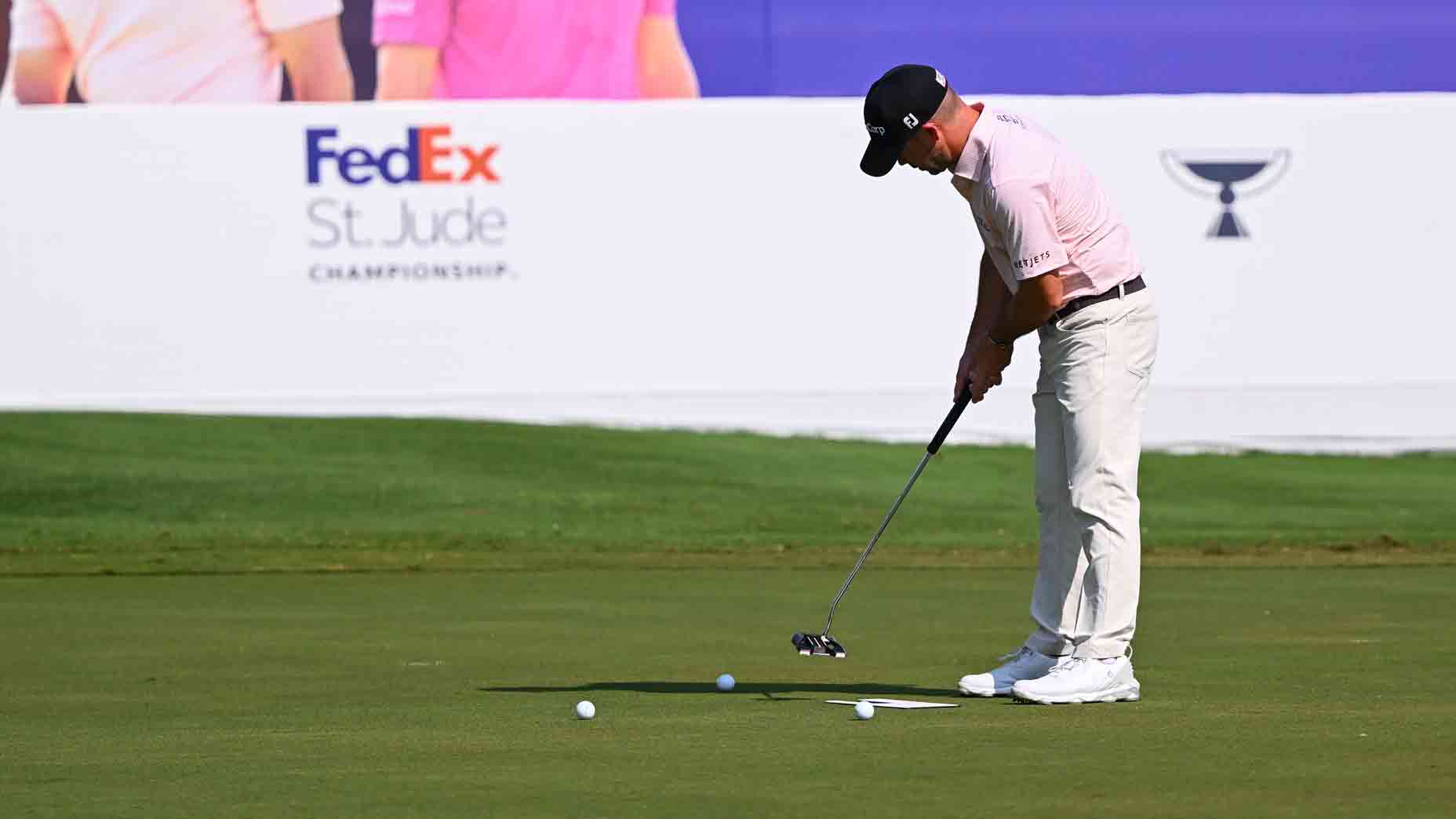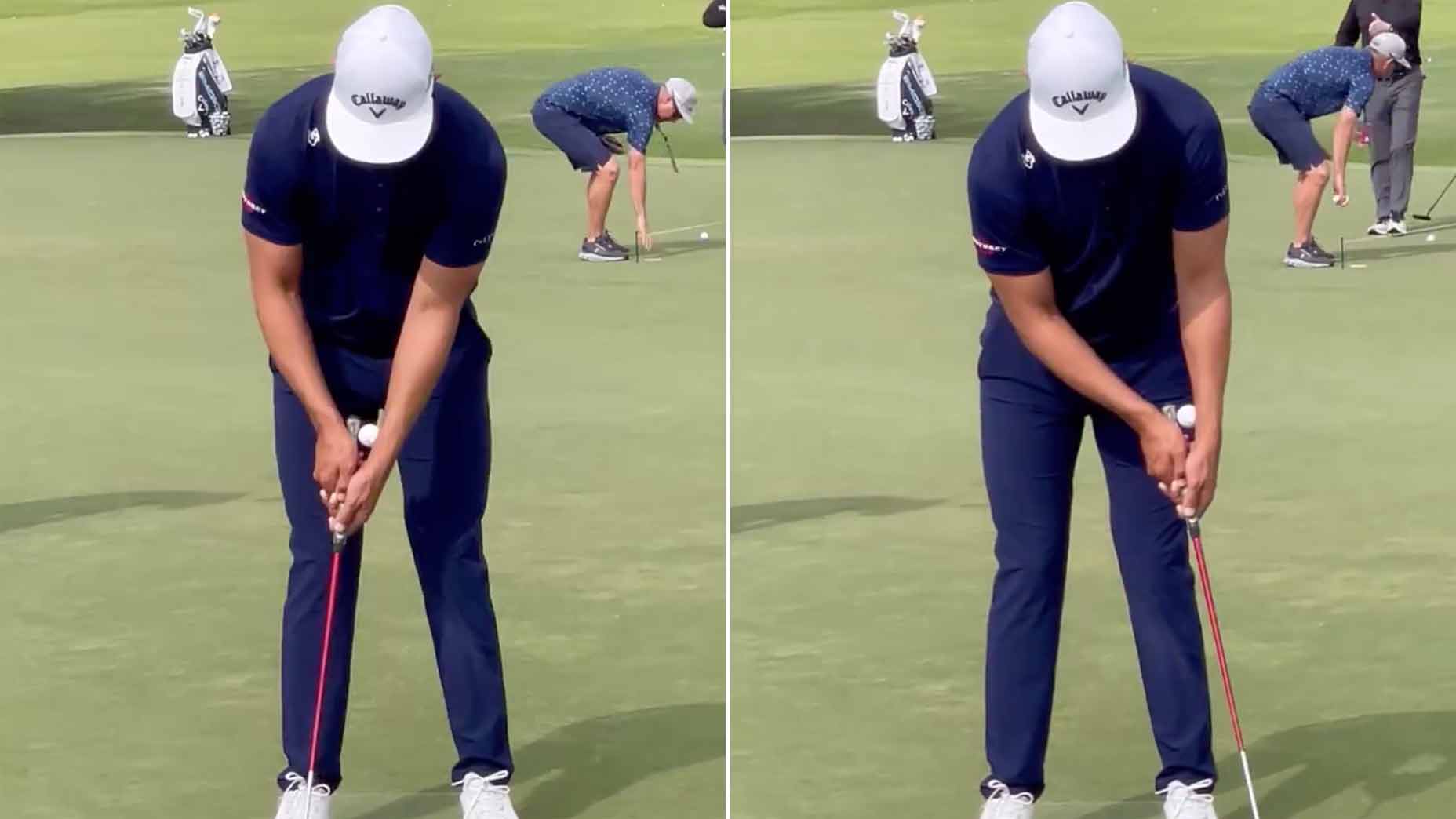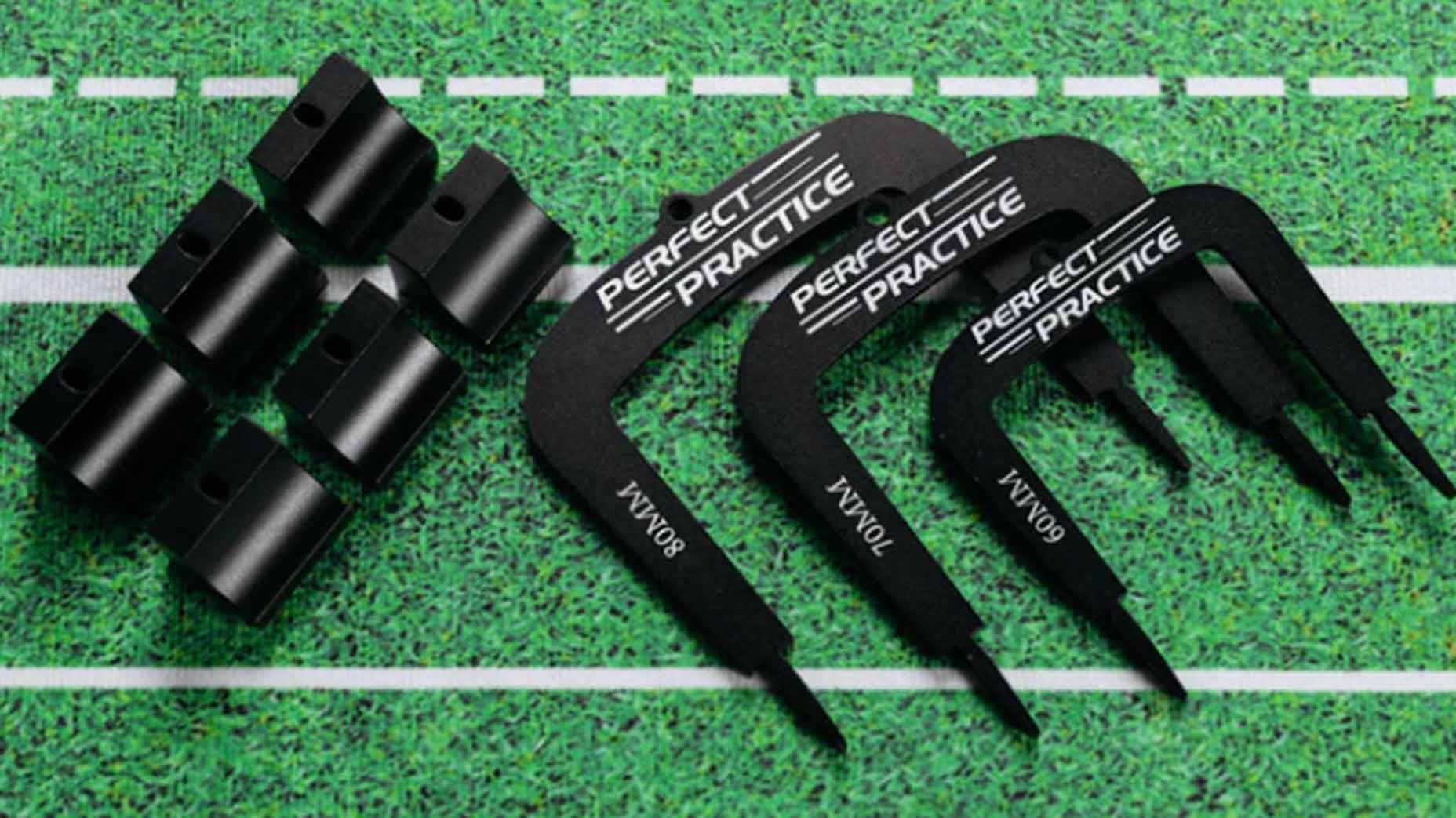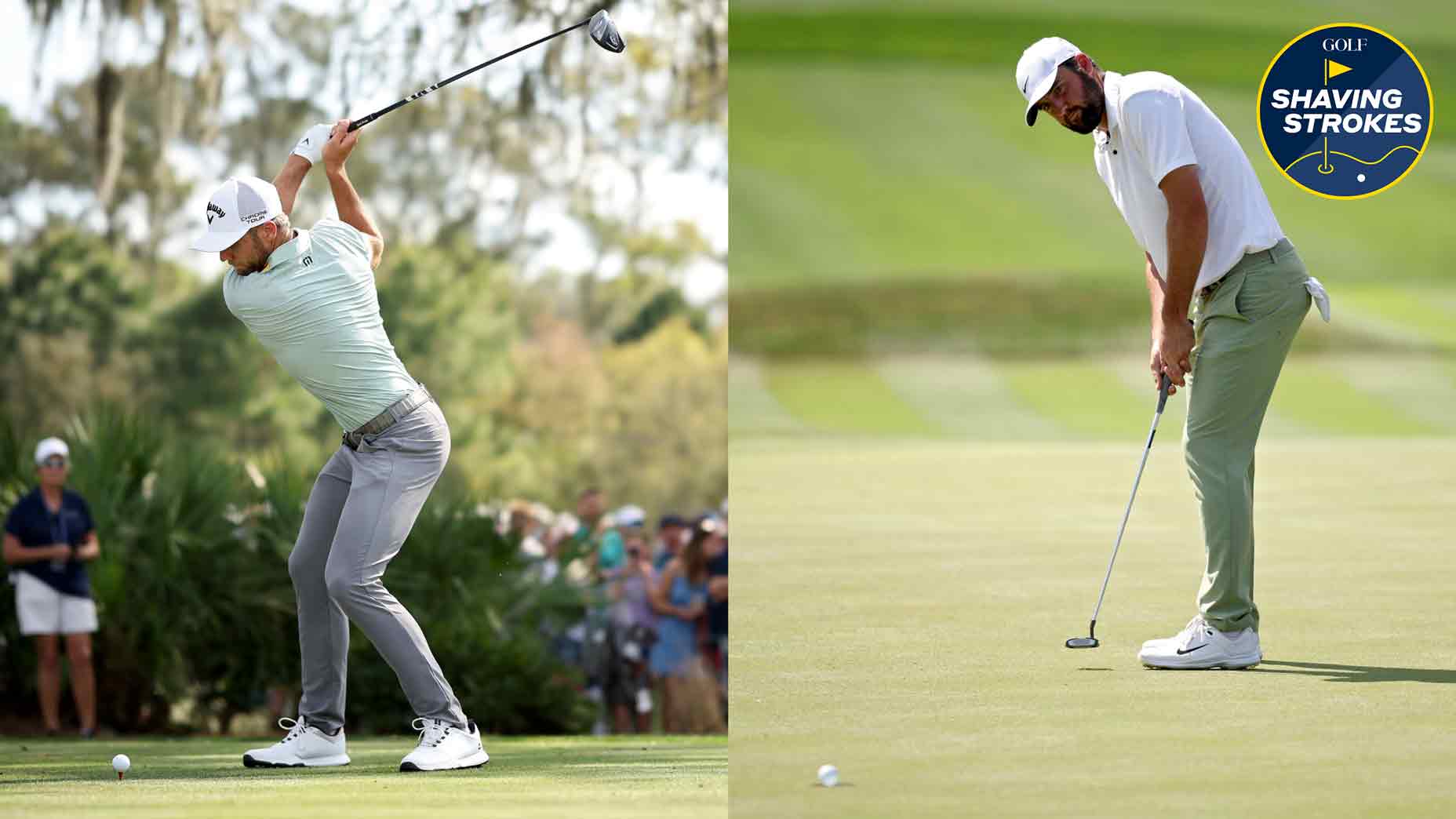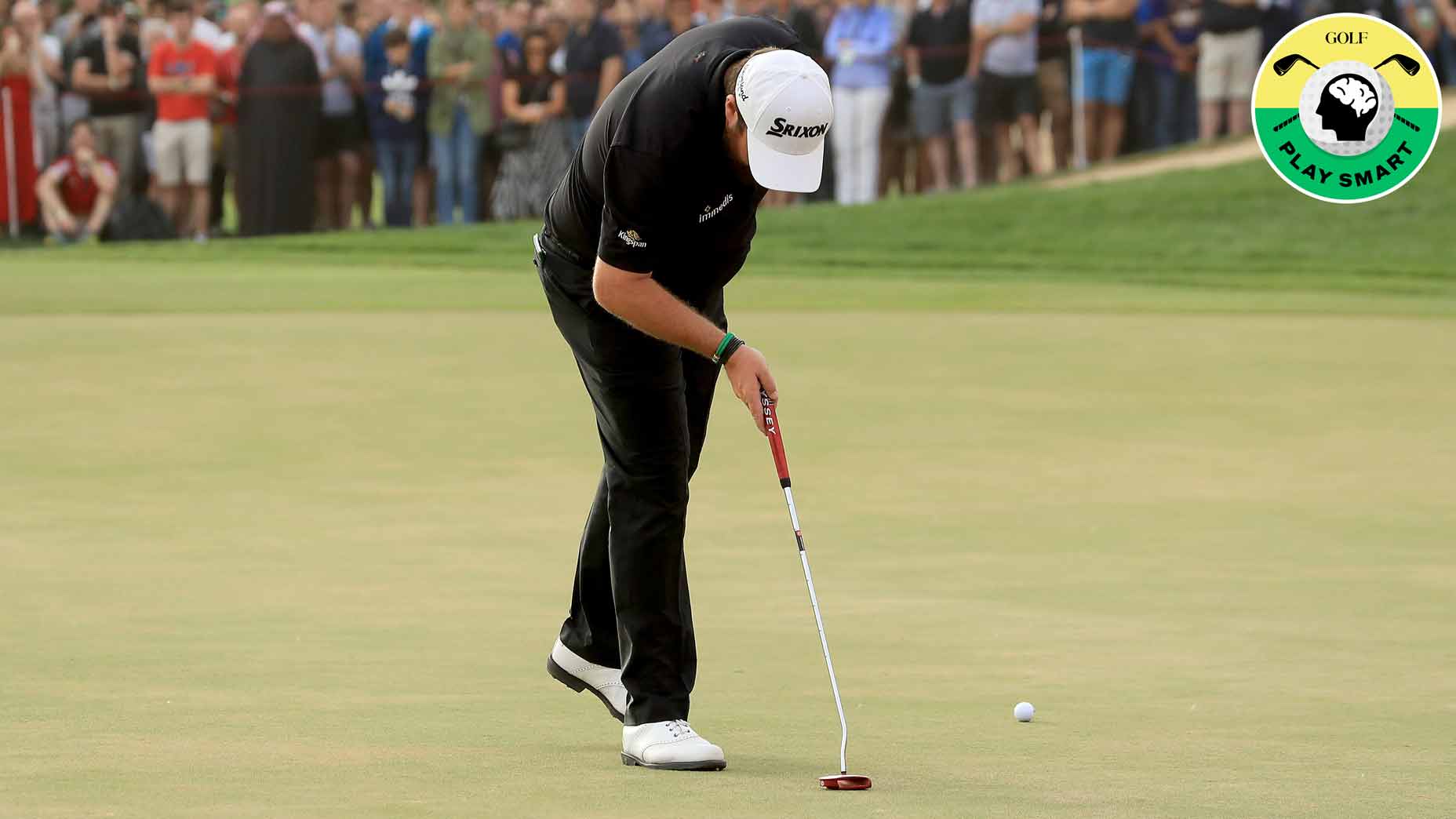Can eyes-closed putting work for an average golfer? We put it to the test
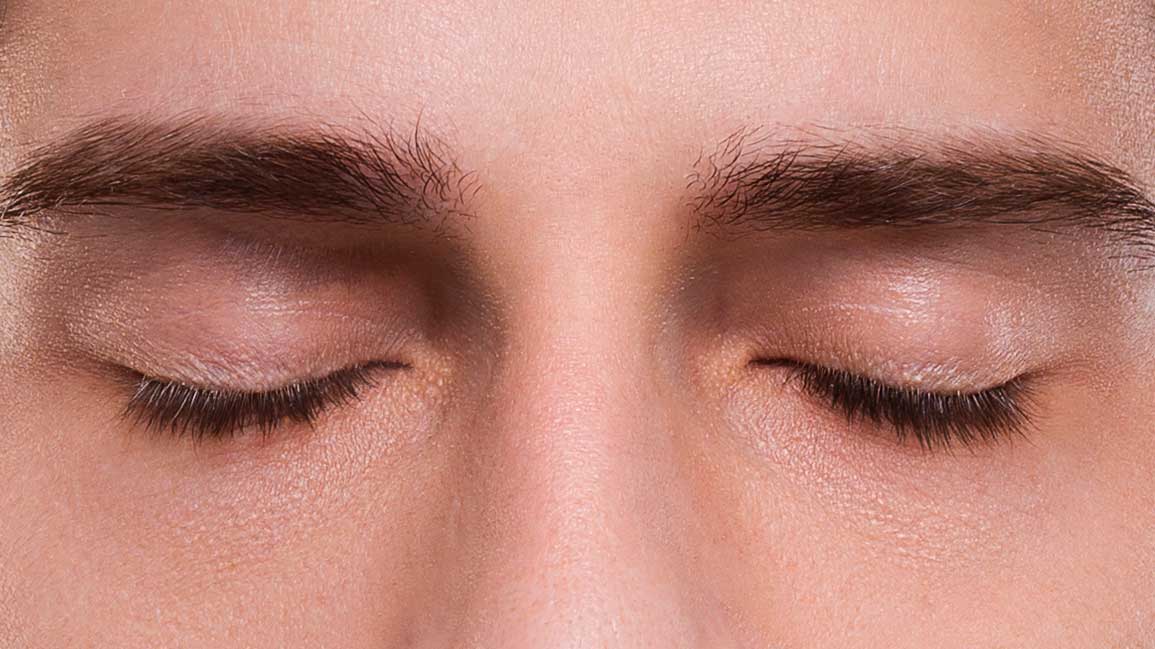
Shut-eyed putting works for some of the best players in the world. Can it work for you?
getty images
In Brandel Chamblee’s first professional start, the 1985 Waterloo Open, in Iowa, his playing partner faced a four-footer for par. The putt lipped out on the low side, coming to rest two feet right of the hole. After tidying up from there, the partner asked Chamblee if the ball had lipped out.
“What do you mean, you didn’t see it?” Chamblee said.
“No,” the player said, “I’m putting with my eyes closed.”
Not missing a beat, Chamblee deadpanned, “I guess that’s why you shoved it two feet right.”
Moments later, Chamblee came clean to his rattled partner, and both players shared a laugh.
“But I remember thinking,” Chamblee said earlier this week, “‘Man, I hope I don’t ever get that crazy and desperate.’”
Crazy and desperate…or unorthodox and effective?
That’s the 1.19-million-dollar question you might be asking yourself after Sergio Garcia claimed that very amount at the Sanderson Farms Championship last week, putting, you guessed it, with his eyes closed. Garcia said the technique gives him more freedom to “feel the stroke” instead of getting too hyper-focused on his form. “I just let my natural ability kind of take over instead of telling myself what to do,” he said.
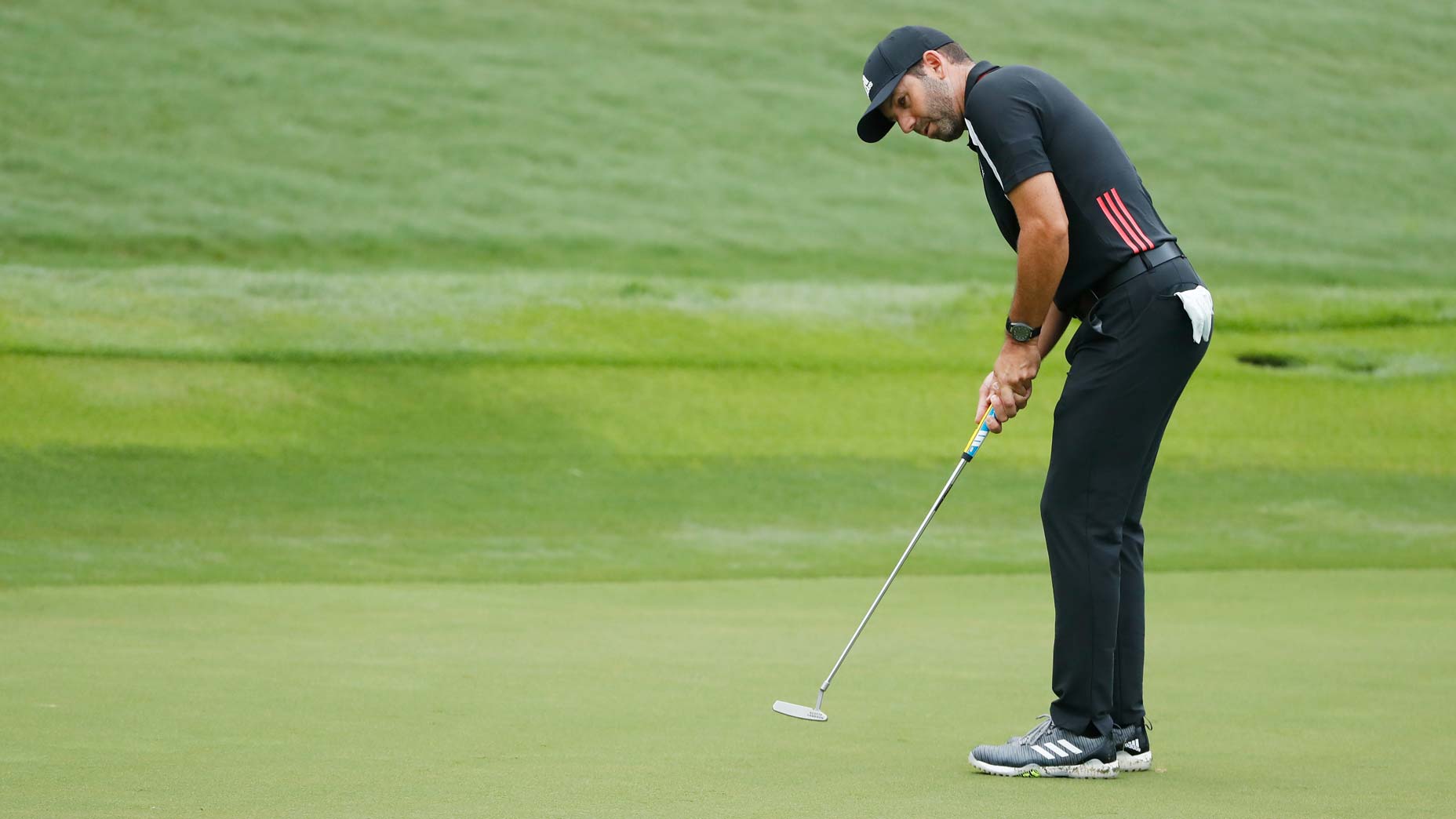
The no-look approach has been good to others, too. Four years ago, Lexi Thompson won an LPGA event in Thailand rolling putts with her eyes closed. Australian Peter O’Malley no-looked his way to victory at the 2010 New South Wales Open (“to take away a bit of the visual anxiety,” he said). At the 1994 Pebble Beach Pro-Am, an aging legend with debilitating yips employed the technique and emerged victorious. (His name was Johnny Miller.)
One final nugget: In 2011, on the final day of the Arnold Palmer Invitational, Justin Rose, at the urging of his caddie, switched to eyes-closed putting mid-round. He promptly drained a 10-footer for birdie on the 10th green. Over the eight ensuing holes, eyes still sealed, he made three more birdies and an eagle for a back-nine 31 that carried him to a third-place finish. “Rhythm is the only thing that matters when you are putting under pressure and simply by having your eyes closed, you clock into that rhythm,” Rose explained later. “You can’t see, so you really use your feel instincts.”
Point is, folks, there’s plenty of evidence beyond Garcia that the approach works for elite players. Less clear is whether it will work for you. What if you’re a middling golfer with an inconsistent putting stroke and decidedly less natural talent than Garcia? Can lowered lids help you hole more putts?
Over the last few days, I’ve explored that question by selfishly trying to determine whether the method would work for me, a 14 handicap with a putting stroke that mimics the out-to-in motion of my deeply flawed full swing. Some days I can overcome the technical shortcomings in my stroke to make it work, other days not. Perhaps you can relate.
My testing began last Thursday after a clip of Garcia started making the rounds on Twitter. My laboratory: Plainfield West 9, a nine-hole public treasure down the road from my New Jersey home and across the street from Plainfield Country Club. There are many charms to the West 9, beginning with its greens, which are maintained by the Plainfield CC crew. They’re exceptional, including the lovely, sloping practice green that sits directly behind the 1st tee.
I plopped five balls on that green and got to work indoctrinating myself into the world of eyes-shut putting. My first few attempts, from 10 feet or so, wouldn’t have won me any prizes. They whizzed by the hole. Then again, first few putts of the day, I told myself. Getting used to the pace! Eyes-open rolls probably wouldn’t have fared much better.
We should note here that this approach does not cloak you in total darkness. You step into your putt eyes open, take your stance, adjust your feet and ball position, pick your line, get comfortable. Not until the moment before you rock back the putter do you close your lids. From there, feel takes over, with no visual distractions or other external factors to influence the flow of your stroke.
The method felt foreign at first. Unsettling, too. At impact I found myself over-accelerating the putterhead, leading to putts running through the break and well past the hole. But mixing in some open-eyed putts among the closed-eye variety, it wasn’t long before I discovered some semblance of a rhythm, along with some positive vibes. “With your eyes closed, you have no other choice but to fill your mind with a picture of the hole,” putting guru and Top 100 Teacher James Sieckmann noted a few years ago. I was starting to understand what he meant.
Keen to gather some (highly unscientific) data, I committed to hit 40 putts: 20 from 15 feet (10 open-eyed and 10 closed) and another 20 from 5 feet (10 of each variety again). First up, a gentle right-to-left 5-footer. The results:
Open: 2 for 10 | Closed: 5 for 10
FIELD NOTES: Two for 10 eyes open? Sad! I was almost too humiliated to publish the results. But this is a professional operation. It was what it was. Upside: I made half of my closed-eye attempts! That felt…not terrible. Learning the line from my eyes-open session certainly helped, but still, I was starting to see the light. Not staring down at my ball lowered my expectations and freed me up. I simply sent my orb on its way and trusted it into the hole.
Next, I backed up to 15 feet, on a somewhat similar line. The results:
Open: 4 for 10 | Closed: 3 for 10
FIELD NOTES: From that distance, both these sessions felt like wins, especially after my abysmal effort from 5 feet. Again, homing in on the line with my eyes-open putt surely benefited my closed-eye campaign, although it didn’t always look like that would be the case. With eyes sealed, I opened with six straight misses, some rolling five or six feet past the hole. Finally, I drained my seventh attempt, then the eighth and the ninth. Three straight from 15 feet is stellar with any method. Something had clicked. Perhaps it was more the result of deliberate practice — i.e., banging putt after putt to train my muscles to comply — than anything psychological. Or maybe I had just gotten lucky. Regardless, it felt good. Almost Jedi-like. If I wasn’t yet a closed-eye convert, I was beginning to believe.
Over the next couple of days my intrigue only grew as I watched Garcia climb the leaderboard and eventually win. But my own study had been inconclusive. I needed more reps. On Monday evening, I returned to PW9, this time with a more thorough plan: Five distances with varying breaks and 6 putts from each location: 3 eyes-open, 3 eyes-closed, alternating methods with each putt so as not to allow myself to get into a robotic-like rhythm with one approach or the other. The results:
Slightly uphill 12-footer:
Open: 2 for 3 | Closed: 0 for 3
Right-to-left 35-footer (especially slippery in last five feet):
Open: 1 for 3 | Closed: 0 for 3
Flat, slightly left-to-right 5-footer:
Open: 2 for 3 | Closed: 1 for 3

Downhill right-to-left 25-footer:
Open: 0 for 3 | Closed: 0 for 3
Uphill, hard right-to-left 18-footer:
Open: 0 for 3 | Closed: 0 for 3
Grand Total:
Open: 5 for 15 | Closed: 1 for 15
FIELD NOTES: Umm, not a ringing endorsement for the shut-eye method! But what really grabbed my attention during this session wasn’t so much the misses themselves but my dispersion rate. Whereas nearly all my open-eyed putts were in 3-5 feet of the hole, a troubling number of my closed-eyes putts missed by twice that distance (I also found my putter face often closing at impact, leading to ugly pulls). With the hard breakers, in particular, I struggled to marry proper pace with line, resulting in a few real clunkers.
These misfires aligned with something Chamblee told me. “Sooner or later,” he said, “a player trying this [method] hits one so bad, so embarrassingly bad, that whatever benefit they gain from not looking at the ball is lost to the fear they may eventually come close to whiffing a putt. They have to open their eyes to that reality.”
I didn’t come close to whiffing any putts, but a new reality did begin to settle in as I processed my (worth stressing again: highly unscientific!) test: closed-eye putting is most likely not for me. Is it for you? Maybe, especially if you struggle to draw back the putter or rock it through impact, or otherwise exhibit any twitchiness and/or yippiness. Remember, it doesn’t matter how the ball gets in the hole, it just matters that it gets there.
Garcia said it best, when asked about naysayers to his approach.
“I don’t care what they think,” he said. “They’re not out there playing. I’m going to do whatever I feel is best for me.”
Amen to that.
